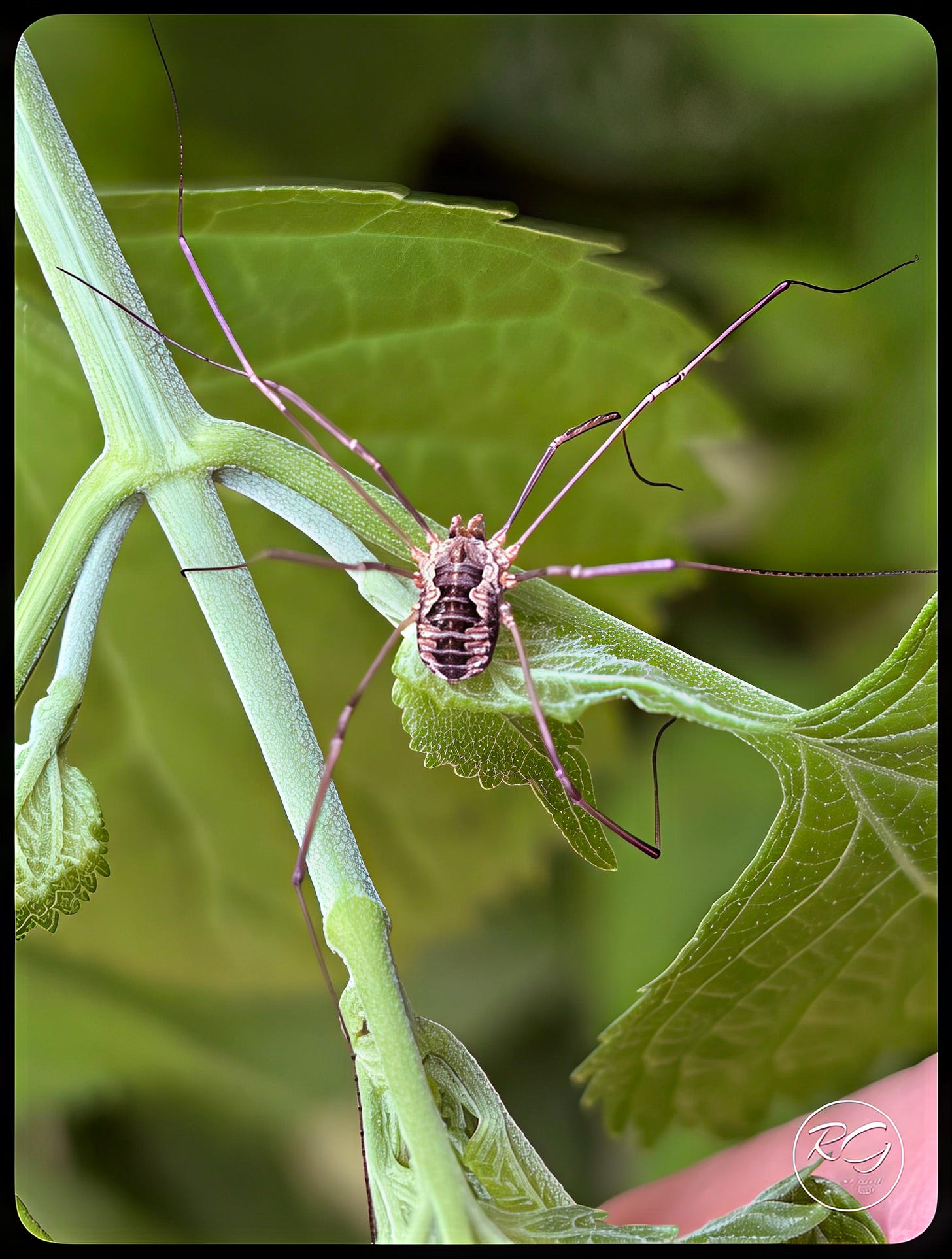Another “spider” for the collection. Not new to me, and not native to, Canada.
The European Harvestman (Phalangium opilio) is "the most widespread species of harvestman in the world", occurring natively in Europe, and much of Asia, and having been introduced to North America”. I put “spider” in quotes in the opening sentence as Harvestmen are not taxonomically spiders. Like the spiders and most adult mites, harvestmen have two major body sections and eight legs and lack antennae. Unlike spiders, the two body sections of harvestmen are broadly joined and no web spinning organs are present. Harvestmen differ from most mites by their larger size and by having the posterior body section distinctly segmented. They feed on many soft bodied arthropods, including aphids, caterpillars, leafhoppers, beetle larvae, mites, and small slugs and so have a minor role to play in pest control.
This specimen was hanging out ender a leaf of a Snakeroot plant - a native plant of the Asteracea that is more than a little toxic. It flowers in late summer and provides late season food to bees and butterflies, as well as some moths. This is a highly toxic plant to all mammals and should not be consumed. Milk produced from animals that have consumed this plant is also toxic to humans. We have a lot of Snakeroot in the garden and I imagine that I will return to it in more detail when flowering begins.





The common name is misleading as it's not the only European harvestman! I'm not aware of it having a common name here in the UK, though it's a species I'm certainly familiar with.